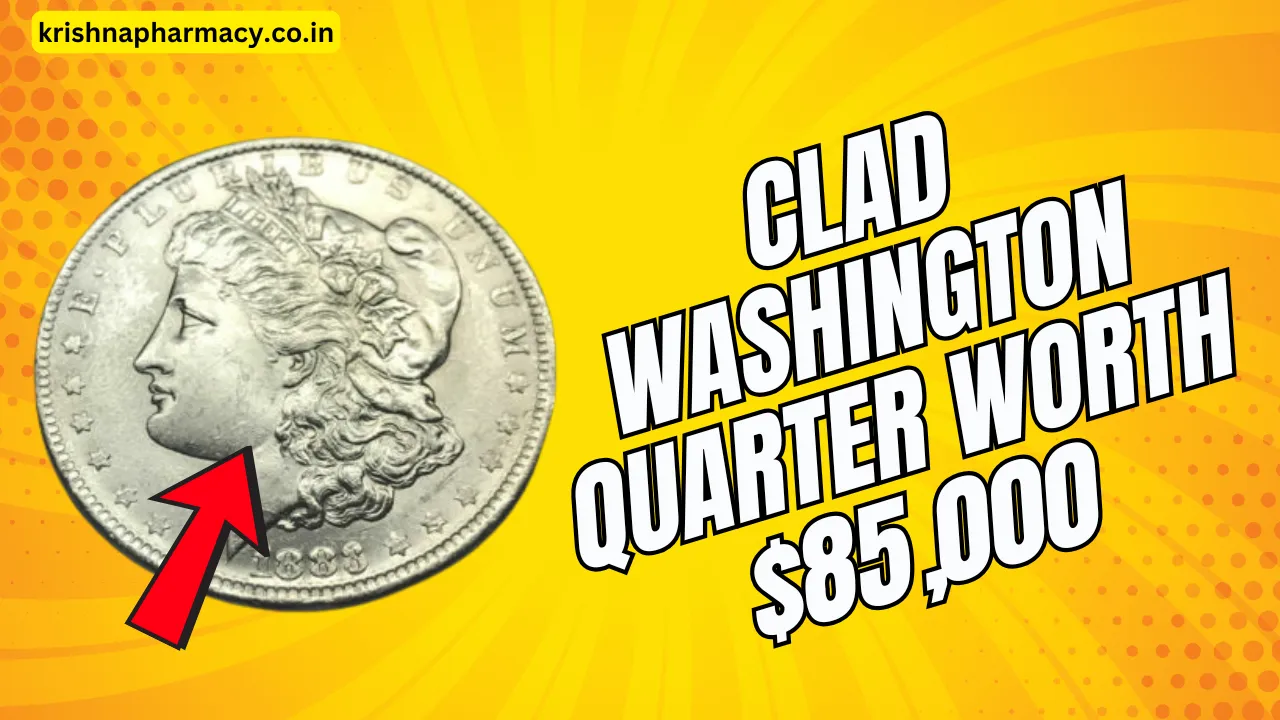Clad Washington Quarter: Have you ever glanced at the loose change in your pocket and wondered if one of those coins could be worth a small fortune? Surprisingly, among those everyday quarters, one could potentially be worth $85,000 or more. The $85,000 Clad Washington Quarter is not just any coin—it’s a rare and highly sought-after treasure among collectors.
In this article, we’ll dive deep into the history, unique features, and value of this extraordinary quarter. You’ll learn how to identify this coin, understand why it’s worth so much, and discover tips on preserving its value. Keep reading—you might just have a valuable gem sitting in your change jar!
Quick Facts About the $85,000 Clad Washington Quarter
| Feature | Details |
| First Minted | 1932, to honor George Washington’s 200th birthday |
| Composition | 90% silver (1932-1964), copper-nickel clad (1965 onwards) |
| Most Valuable Issue | 1932-D |
| Rarity | Limited mintage of 436,800 coins |
| Highest Auction Price | $143,750 for a Mint State 66 quarter |
| Key Identification Marks | Date (1932) on obverse, ‘D’ mint mark on reverse |
The History Behind the Washington Quarter
The Washington Quarter was introduced in 1932 to commemorate George Washington’s 200th birth anniversary. Designed by John Flanagan, the coin features a distinguished left-facing portrait of Washington on the front and an eagle perched on arrows surrounded by olive branches on the back.
From 1932 to 1964, these quarters were minted with 90% silver and 10% copper. However, in 1965, rising silver prices prompted the U.S. Mint to switch to a copper-nickel clad composition, a standard that continues to this day. Despite the material changes, the coin’s classic design remains iconic.
What Makes the $85,000 Clad Washington Quarter So Rare?
The 1932-D Washington Quarter is a standout coin in American numismatic history. It was minted in Denver, and with only 436,800 coins produced, it has one of the lowest mintages in the entire series.
This rarity is amplified when you consider the condition of these coins. Many were used in everyday transactions, leading to wear and tear. Finding a Mint State (MS66) specimen is extremely rare, which is why collectors are willing to pay up to $85,000 or even more at auctions for one in pristine condition.
How Coin Grading Determines Value
Grading plays a critical role in determining the value of a Washington Quarter. Coins are evaluated on the Sheldon Scale, which ranges from 1 to 70:
- MS60-MS65: These coins are considered Mint State, showing no wear but minor imperfections.
- MS66-MS70: These are near-perfect or flawless coins, with MS70 being the highest possible grade.
For a 1932-D Washington Quarter:
- MS60: Valued around $1,100
- MS65: Can fetch up to $12,000
- MS66: Worth between $75,000 and $85,000
In 2008, a rare MS66-grade quarter was auctioned for a staggering $143,750—setting a record for this coin.
How to Identify an $85,000 Clad Washington Quarter
Wondering how to tell if you have one of these valuable quarters? Here’s what to look for:
- Date: Look for the year 1932 below George Washington’s portrait on the obverse (front) side of the coin.
- Mint Mark: Turn the coin over and check below the eagle’s tail feathers. A “D” mint mark indicates it was minted in Denver.
If your coin matches these two key identifiers, you might be holding a valuable quarter. However, its condition will ultimately determine its final worth.
Other Valuable Washington Quarters Worth Checking
While the 1932-D quarter is the crown jewel, other Washington quarters can also carry significant value:
- 1932-S Quarter: With a mintage of only 408,000, this San Francisco-issued coin is nearly as rare as the 1932-D.
- 1949-D Quarter: In Mint State 68, this quarter can fetch prices as high as $22,500.
- 1955-D Quarter: Another rare find, valued at $22,500 in exceptional condition.
These coins might not hit the $85,000 mark, but they are still valuable treasures worth looking out for.
Preserving and Evaluating Your Coins
If you believe you’ve found a rare $85,000 Clad Washington Quarter, follow these steps to protect and assess its value:
- Avoid Cleaning the Coin: Cleaning can damage the coin’s surface and significantly reduce its value.
- Use Professional Grading Services: Submit the coin to trusted grading authorities like PCGS (Professional Coin Grading Service) or NGC (Numismatic Guaranty Corporation).
- Consult Numismatic Experts: Seek advice from reputable coin dealers or collectors for an accurate assessment.
Proper storage, like using airtight holders, can also help maintain the coin’s condition.
Why the $85,000 Clad Washington Quarter Is a Treasure
The $85,000 Clad Washington Quarter isn’t just valuable—it’s a piece of history. Its rarity, coupled with its historical significance and condition, makes it one of the most coveted coins in the world of numismatics.
Finding one isn’t just about financial gain—it’s about uncovering a story that has traveled through decades, from minting presses to your hands.
FAQs About the $85,000 Clad Washington Quarter
Why is the 1932-D Washington Quarter so valuable?
Its low mintage (436,800 coins) and rarity in mint condition make it highly valuable.
How do I know if I have a rare Washington Quarter?
Check for the 1932 date and a “D” mint mark on the reverse side.
Should I clean my old coins before selling them?
No, cleaning can reduce the coin’s value. Leave it as is.
Where can I get my coin graded?
Trusted services include PCGS and NGC.
Are other Washington quarters valuable?
Yes, coins like 1932-S, 1949-D, and 1955-D are also highly prized.
Final Thoughts
The thrill of discovering an $85,000 Clad Washington Quarter in your change jar is unmatched. With the right knowledge and a keen eye, anyone can stumble upon this hidden treasure.
So, start inspecting your quarters today—you never know what fortune might be hiding in plain sight!
Enjoyed this article? Share your findings in the comments below or pass this knowledge to a fellow coin enthusiast. Happy collecting!
